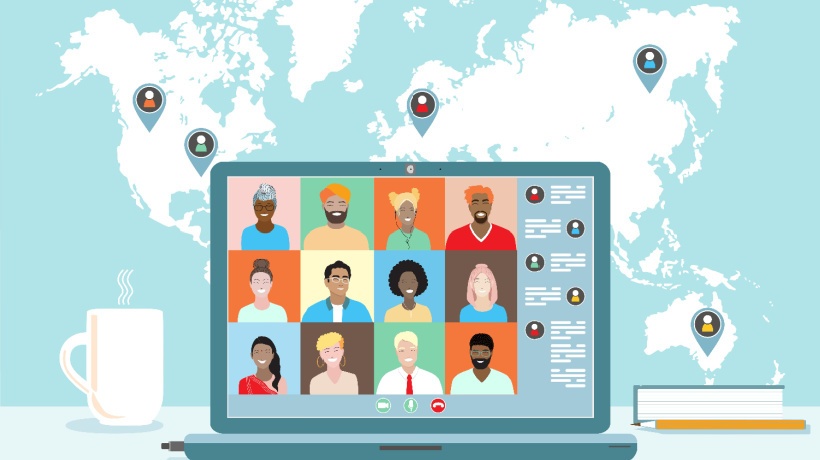Crowdsourcing Teaching And Leveraging Technology
Most human beings are generous and educators are no exception. Also, most people want to leave a legacy and again, educators are no exception. Given the different ways COVID-19 has made us think about how we meet and teach, the opportunity exists to use technology to leverage the aforementioned human traits in order to create education systems that are unparalleled in quality and equality. The technology that I refer to is that of a complementary partnership between videotelephony and LMS technology (see my previous article in this regard).
Whatever we develop needs to be able to work in countries that have significant challenges. As such, I will base my vision on South Africa. It has a very unequal education system which ranges from expensive private schools with world-class resources, facilities, and teachers down to remote schools that do not even have proper classrooms or toilets and where teachers are often unqualified and are teaching subject matter at a level that they have not formally achieved themselves. Also:
- We have 11 official languages.
- Our education system has gone through multiple changes in approach and the overall education level is seen to be diluting every year.
- Teacher unions and the various education departments are continuously at loggerheads.
Project Proposal
For discussion purposes, I am going to apply my vision to one subject in one grade only. And, if we gain some kind of consensus that my vision is feasible, there is no reason why we cannot scale it at pace to all subjects in all grades, across different education systems. I am going to address my proposed vision in point form, to make it easier to follow the logic.
1. I will choose a subject that I am familiar with teaching, this being business economics for Grade 11. In South Africa, Grade 11 is the second to last year of formal schooling, with pupil ages ranging between 16 and 18 years.
2. I will apply a 4 term school year. This would involve about 32 weeks of active teaching with an average of 5 lessons per week, with a real teaching time of about half an hour per lesson. This would be 160 half-hour lessons.
3. It then makes sense to divide the syllabus up into 160 learning units.
4. We are able to contact every headmaster and headmistress current and recently retired, as every school is registered with contact details. This enables us to ask who, in their opinion, are the very best Grade 11 business economics teachers, current and recently retired, that they have ever worked with. We would explain our vision, to give the rationale for our request for input.
5. Armed with a list of arguably the best Grade 11 business economics teachers, we would approach each of them individually. We would explain our vision and explain why they are being contacted (obviously because they have been rated as being superb Grade 11 business economics teachers). We would then ask them if they would be prepared to leave a legacy to their profession by giving up a few hours of their time to teach a number of units of Grade 11 business economics.
Let’s say, for the sake of an example, we get a list of 80 great teachers and 40 of them commit (I believe it would be a higher percentage), then we would only require each of them to prepare lessons on 4 units. This would not be onerous for teachers of this quality.
6. In order to achieve the required level of consistency, we would build standardized teaching templates. These would be open-ended enough to not limit the individuality or creativity of each teacher. The templates would blend formal presentation with a printable summary of lesson notes as well as a selection of methods to test understanding of the concepts taught in any lesson/unit.
7. The templates would be loaded on the chosen LMS. In South Africa, we would recommend using Obami, as they have vast experience of working with educational institutions here as well as having the level of technology required. Visual appeal is critical and Chris van Rooyen of Perceptione has offered his expertise in this regard. I am sure that many other talented graphic artists would offer their assistance to a project of this nature.
8. The key to the success of this project is creating a partnership between LMS and videotelephony technology (see my last article in this regard). Currently, I would choose Zoom as the videotelephony partner, as I am familiar with using this app and understand the powerful opportunities it offers. However, there are other brilliant videotelephony apps that could work as well or better.
9. We would develop a tutorial to coach the teachers on how to optimize both LMS and videotelephony technology for preparing and presenting their lessons.
10. It is critical that we develop a few case study lessons showing different teaching styles and using different teaching resources (whiteboard, PowerPoint, case studies, etc.). These would be used for demonstration purposes so that teachers can get a feel for what we are aiming to achieve.
11. The teachers would prepare their allocated lessons and submit them to the project team for quality control and collation.
12. The project team would load the lessons onto the LMS. Typically, the syllabus would be accessed and presented in a synchronous manner. However, the power of the LMS would allow asynchronous learning whereby teachers or pupils could search and access units for revision or refresher purposes prior to teaching a concept that requires an understanding of the related concept.
13. After quality checking the program to ensure it is synchronous, logical, and complete, it is ready for release. The program should be explicit and robust enough to enable a grade 11 pupil to complete it on their own if classroom support is not available. A critical aspect of the success of the program is to train teachers who would use the program, in classrooms, on facilitation skills. Basically, their role in the classroom would be to facilitate the learning of the pupils in their class.
This training in facilitation skills could be done through an eLearning program, supported by Zoom discussions and role-plays with Subject Matter Experts. The importance of this aspect is reinforced by those who would have had experience with the School of the Air. Wikipedia offers the following definition:
School of the Air is a generic term for correspondence schools catering for the primary and early secondary education of children in remote and outback Australia where some or all classes were historically conducted by radio, although this is now replaced by telephone and internet technology. In these areas, the school-age population is too small for a conventional school to be viable.
Many of us in Africa have had the experience of School of the Air and insights from this will be invaluable.
14. The distribution of the program can be achieved in many ways. Ideally, it would be LMS-based and accessed through the internet via any device with connectivity. Again, ideally, cell phone network providers would have zero rate data usage for school connectivity. Hopefully, smart screens would be donated to schools that could not afford to buy them. Another option, where there is no connectivity, would be to distribute the program on flash drives.
15. Updating or improving the program is relatively simple. As the program is divided up into units/lessons, additional lessons can be added or lessons can be replaced with improved versions. I have seen teachers teach subject matter in a way that amazed me as to how well they could explain a concept. As the program is used, it would iterate with teachers adding new or better ways of explaining/teaching various concepts.
16. Logistically, the program would be introduced in English, but once it is successfully established, it could be translated into other languages. This might require using a slightly different presentation method, but this can be achieved.
This vision may seem ambitious, but it is achievable and I sincerely believe that it could be delivered at scale and pace, given the generosity of teachers giving their time, the power of videotelephony and LMS technology, and the support of governments, education departments and businesses. Imagine a world where quality education is available equally. Thank you COVID-19 for the silver lining.
Call-To-Action
Please, let's find a way to make this happen! It would be a dream if eLearning Industry members would add their considerable expertise to this project.








